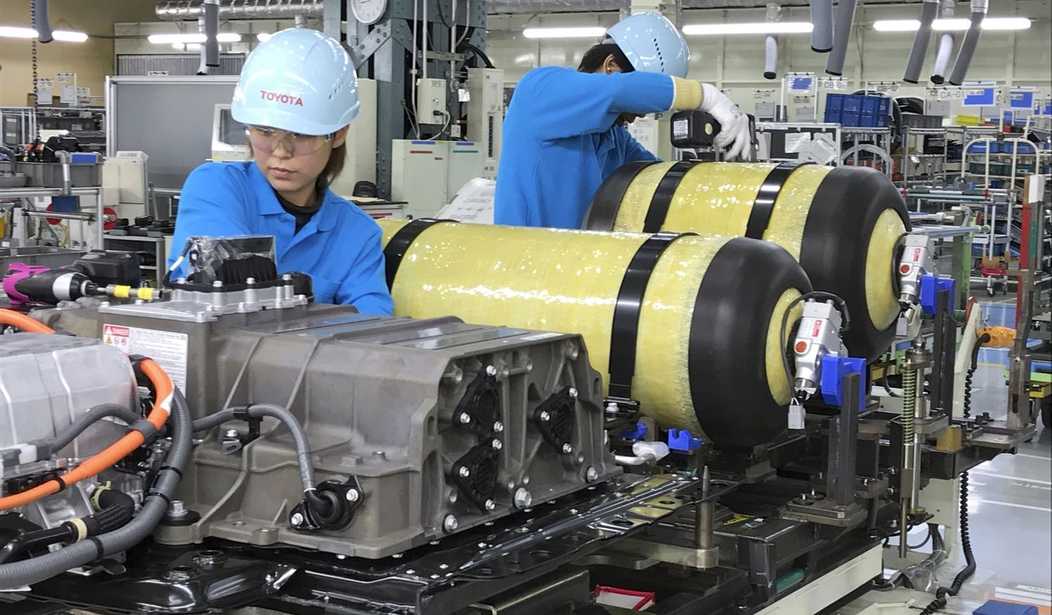Yesterday, Australia celebrated something of a breakthrough day in its energy industry when a specialized ship left port to sail to Japan. The ship’s heavily insulated hold contained a significant quantity of liquid hydrogen to be used as fuel in a variety of Japanese industries. The ship is reportedly the first of its kind, able to transport large volumes of the volatile cargo and the Japanese have been hard at work preparing facilities to receive, store, and distribute the new green energy products. So that’s some great news, particularly if your priority is decarbonizing the system, right? Perhaps. But as we’ll see in a moment, things may not be as clear-cut as they are being described and this transfer of energy isn’t really the win-win that climate alarmists were hoping for. (Time Magazine)
When the 380-foot-long Suiso Frontier set sail from Australia on Friday, bound for Japan with liquid hydrogen in its insulated hold, it marked the first time that liquified hydrogen has been transported by sea to an international market, according to project participants.
Experts say that it’s an important milestone for hydrogen—a fuel that several major economies have pinned their hopes on to help them decarbonize. It proves that the supply chain works, they argue, and will kick off international trade in the commodity.
“Australia’s first hydrogen liquefaction facility and ship loading terminal, the world’s first liquid hydrogen carrier ship, and a hydrogen unloading and storage facility in Kobe, Japan,” have been developed so far, says Jeremy Stone, a non-executive director of J-Power.
As I’ve discussed here previously, I have no problem with investing in hydrogen as a viable alternative energy source. I’m an “all of the above” sort of person when it comes to producing the energy our civilization needs to stay afloat, and hydrogen holds a lot of promise and delivers multiple benefits. First of all, it’s a very “clean” energy, both in terms of burning it and (with some exceptions) producing it for use. It delivers a lot of power when it’s burned and is commonly used in rocket launches. Also, it’s remarkably abundant here on earth.
With all of that said, there are still some significant challenges facing us in terms of moving to the widespread use of hydrogen as fuel and the Australians have not addressed all of them. First of all, almost all of the hydrogen available on the planet is trapped in water molecules. You can separate the hydrogen from the oxygen in water easily enough by running an electric current through it, but you first have to generate that electricity somehow. The Australians are doing it by burning lignite (brown coal) which is obviously a high-carbon emission fuel. Further, it takes more energy to split the hydrogen out of the water than is produced by the hydrogen when it’s used as fuel.
If you use more fossil fuel energy to produce the hydrogen than the energy you wind up getting out of the finished fuel, that’s a net loss in terms of “saving the planet” and regulating carbon emissions. It’s just virtue signaling to your primary audience while producing no net positive effect and arguably making things worse. The Japanese would have wound up with more net energy if the Australians had just shipped them the coal to burn.
Also, the storage and transfer of hydrogen are tricky. The Australian ship looks impressive, but you need to cool and compress the gas to a tremendous degree to transport it in a liquid form. (Similar challenges had to be overcome in the effort to export liquid natural gas.) If your container ship experiences a significant containment failure, you’re going to have an earth-shattering “boom” on your hands that will make the average oil spill look like child’s play. And we still need to invest in a massive number of storage and distribution portals for hydrogen before it can be widely deployed.
There is a lot of work going into finding ways to create “green hydrogen” by using solar or wind energy to split the water molecules. But the process needs to be made significantly more efficient before it will be commercially viable. I will admit that the one advantage of deploying these inefficient, carbon-producing hydrogen supplies is that it will provide some impetus for the commercial sector to invest in and expand the required infrastructure required to make widespread use of hydrogen as a fuel viable. But at least for the time being, if anyone tells you that they are wiping out the use of fossil fuels by doing this, you are free to gently correct them and disabuse them of that notion.








